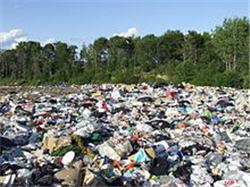
Local Governments Adopt Producer Responsibility Resolutions
The current waste management system in California relies on more than 500 local governments and their waste haulers to figure out how to recycle and dispose of products, even hazardous ones. In California, products banned from landfills exceed $500 million annually, according to a report done by the Department of Resources Recycling and Recovery (CalRecycle). There is no estimate of the total cost of collection and disposal.
Driven to reduce these costs, encourage less toxic products and those that can be cost-effectively recycled, more jurisdictions are adopting resolutions to support a policy called extended producer responsibility (EPR). Producer responsibility shifts the cost of product waste management from the taxpayers and garbage ratepayers to the producers of products, which often incorporate the cost into the product purchase price. It also shifts responsibility for the recycling system to the private sector, ensuring a smaller government and more competitive as well as cost-effective recycling system.
Producer responsibility removes some of the burden for waste management from local governments to the manufacturers, distributors and retailers who all profited from the product. As a direct result of presentations given under a grant funded by CalRecycle and awarded to the Del Norte Solid Waste Management Authority, 20 California cities and counties have adopted these resolutions, bringing the statewide total to 126.
“Producer responsibility makes sense,” said Marc Luce of the Napa Upper Valley Waste Management Authority, which adopted an EPR resolution in May of 2011. “The whole environmental movement has been about assigning the real costs of the product to the generation of the product. Nobody was paying for the things that create toxic problems. We are spending $135,000 at our hazardous waste facility to recycle paint each year. But, with a new EPR law coming into effect, we expect those costs to disappear. Those that are generating the paint will take it back and be responsible for recycling it.”
"We adopted an EPR resolution because we wanted to voice support for legislation and programs that require producers to play a greater role in reducing product waste," said Leslie Robinson, program specialist with the Santa Barbara County Public Works Department. "We are very excited about California's new paint stewardship program, which is estimated to save the County over $90,000 in paint disposal costs."
Due to the economic downturn, cities and counties have to cut services rather than expand them. In some jurisdictions, taxpayers are forced to choose between police and fire or raising garbage rates or recycling toxic products. By shifting responsibility for designing and operating the recovery system to producers, it creates a free-market, feedback mechanism that encourages them to create better-designed, longer-lasting products with bio-degradable and/or less packaging to end up in landfills, reducing end-of-life costs.
When producers develop, fund and manage “take-back” programs for products like paint and mercury-containing lights, they can achieve economies of scale that reduce recycling costs and ensure that products are managed from “cradle to cradle” versus “cradle to grave” with no additional cost charged to recycle the product at end-of-life. Studies show that when people have to pay to recycle, most products end up in the trash.
When EPR becomes the model as it has in places like Canada, the amount of waste to manage usually goes down, saving money. “The paint stewardship program being implemented starting in the fall of 2012 is estimated by CalRecycle to save $21 million to Californians systemwide” said Sanborn. “Producers can collect and recycle paint more cost-effectively than government”.
Local government officials in Napa County have gone on video with their reasons for supporting producer-responsibility programs and why they adopted resolutions asking manufacturers to reduce the end-of-life impacts of their products. To view these videos, go to www.calpsc.org.
In addition to the elected officials, representatives from a local hardware store, waste hauler, hospital, sanitation district and sustainability organization shared why they participated in the local fluorescent lamp or sharps/pharmaceutical take-back projects and their experiences with those programs.
“Thanks to the CPSC and grants from CalRecycle, Del Norte County now has producer-financed take-back programs for mercury thermostats, carpet and all household batteries. This fall we hope to add paint products to this list. These programs will save ratepayers thousands of dollars every year,” said Kevin Hendrick of Del Norte County. “In addition to the cost-savings that local governments and waste haulers will see as a result from hazardous household waste products being managed by producer-designed-and-managed recovery programs, the consumers will be provided more convenient collection opportunities.”
“We’re dedicated to reversing the trend of California producing more and more waste,” said Sanborn. “With the support of local governments partnering with businesses, we can design closed-loop systems that reduce costs of recycling and utilize the innovation and competitiveness of the private sector in reducing the need for new landfills.”